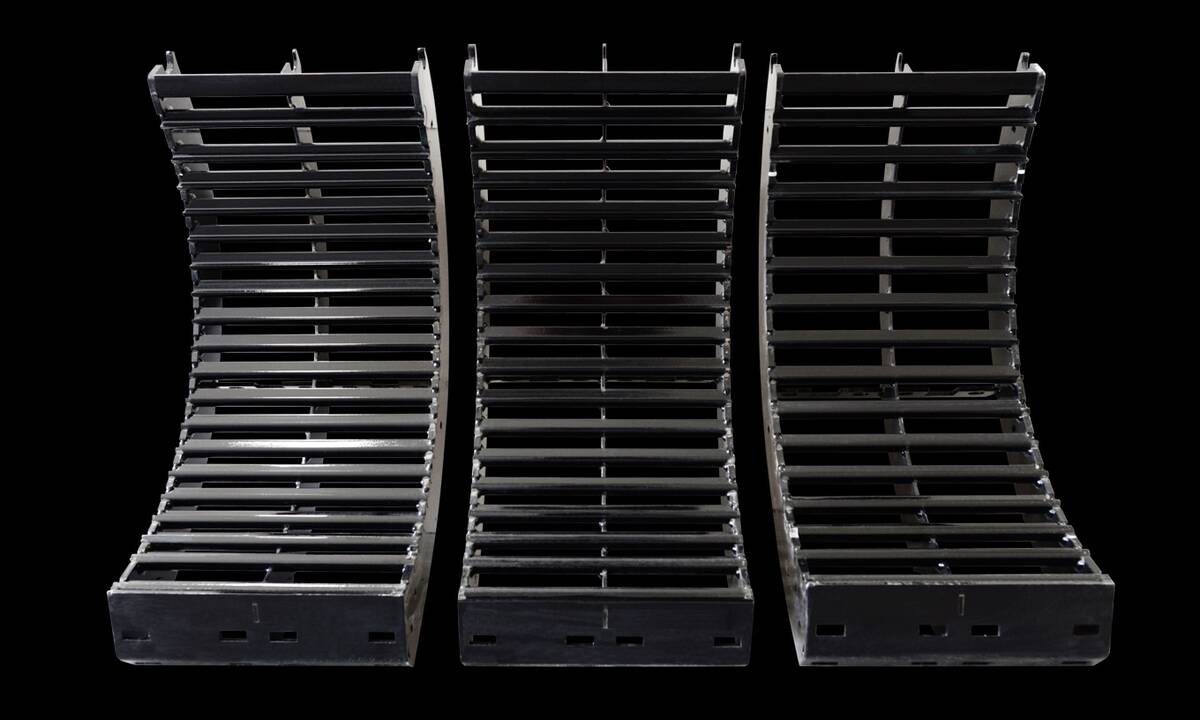It’s time to start treating wheat like it’s a “real crop,” says Ontario agronomist ‘Wheat Pete’ Johnson.
“Wheat is the most responsive crop to management we grow, and yet it’s the crop that we manage the least,” Peter Johnson said at the Farming Smarter conference last month.
“You just put it in the ground and expect a good yield. And if it doesn’t do that, you’re mad at it.
“But it really responds to management.”
And our British counterparts seem to have figured that out. Last year, a producer in the U.K. broke the world record wheat yield (previously held by a New Zealander) with a 246-bushel-per-acre crop.
Read Also

MANITOBA AG DAYS 2026: Stacked equipment category expected at Innovation Showcase
Ten of 28 Innovation Showcase entries at the Manitoba Ag Days 2026 farm show Jan. 20-22 in Brandon are in the equipment category.
That’s not out of the question for Canadian growers, despite the different growing conditions, he said.
Canadian producers, he said, tend to complain about moisture when comparing Canadian yields to those in the U.K., but Ontario gets more rain on average than the British Isles during a growing season.
“Out here it’s all about the water — ‘We didn’t get enough water, so we didn’t get enough wheat.’ — I don’t buy that,” said Johnson.
“It doesn’t need as much water to get high yields as everybody thinks.”
The real difference is “they’re maritime — they’re surrounded by water, and their temperatures stay cool.”
“It’s all temperature,” said Johnson.
And while producers can’t control the temperature, they can control their seeding date — and the earlier the better.
“In Ontario, we lose a bushel per acre per day for every day that we delay planting,” said Johnson. “If you’ve got a lot of acres to plant and you end up planting three days later into that season, that’s three bushels per acre you gave up on however many acres you planted.
“When it’s fit to go, you go, and you go hard.”
It’s the same story in Alberta, where wheat yields decline on average one per cent per day for each day seeding is delayed after May 1.
But Alberta’s environmental conditions are “obviously different from Ontario,” said Ken Coles, general manager of Farming Smarter.
“We have a colder environment and a higher likelihood of frost at certain times of the year,” said Coles.
“Generally, early is better — as long as it’s not too early.”
Timing is everything
That challenge is the variability of spring weather, said Coles.
“If you have an open spring, April 15 to May 10 would be optimum (in southern Alberta). But we’re sometimes at the mercy of the weather, and (in 2014) we didn’t get started until May.”
But in 2016, almost everything was seeded before May, and that made a world of difference.
“I think that’s why everybody exceeded their expectations in yield,” said Coles.
Seeding earlier means that the plant will head earlier, reducing the risk of heat stress later in the growing season.
“If you can get a crop done flowering before it really gets hot, that’s beneficial in our cool-season crops,” said Coles.
“If I can head out earlier so that I get a bigger portion of that grain fill period during those lower temperatures and less of it up in the hot time frame, I get higher yields,” added Johnson.
“It’s the grain fill period that’s most critical. Up until that point, you can do what you like and have a little bit of impact, but it’s the number of kernels per head and the thousand kernel weight that make the biggest difference.”
Producers also need to think beyond planting date and start considering “seeding rate by planting date,” said Johnson.
“If I plant early and that wheat crop emerges when the temperatures are cool, I get way more tillers because wheat is going through its life cycle more slowly at cool temperatures, and it will tiller more,” he said.
“If I plant early, I reduce my seeding rate, and if I reduce my seeding rate — particularly if I’m buying certified seed — it’s a win-win scenario.”
But as with all crops, timing is everything, especially when it comes to “maximizing temperature.” The ideal temperature for wheat is 18 C during the day and 10 C at night.
“High temperatures kill. If you get five days over 35 C, you will not get high yields. It’s just too hot,” said Johnson. “Every day over 25 C you lose a bushel per acre per day.”
So ‘Wheat Pete’s’ advice is simple: “Plant early.”
Frost seeding is something to consider, as is 24-hour seeding shifts — “whatever you can do to plant earlier.”
“You should go hard early, because then that early-planted stuff benefits from every little bit of heat out there.”
Producers need to hit that “magic window” for seeding dates, and for the most part, they’re already “really well equipped to do that,” said Coles.
“This year, 95 per cent of farmers were done within a two-week period. They understand the importance of that, and they’re doing a really good job of that,” he said.
“I don’t think we can underestimate the importance of getting as much of your crop in at the optimum timing as possible.”
















